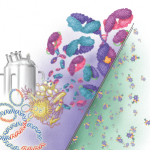As more specialty drugs hit the market—especially biosimilars in the U.S.—rheumatologists will face increasing challenges related to the high cost of these drugs and the need for utilization management strategies to meet formulary requirements.
“We’re at a transition point in the U.S. between educating elected officials, patients and doctors about what PBMs are doing and starting to advocate for legislation and initiatives to bring more transparency to these practices to stop them,” Dr. Worthing says.
Active Advocates
In 2019, the ACR published a position statement on rheumatology drug pricing outlining the challenges posed by high costs of specialty drugs and medical industry practices by PBMs and other groups that make it difficult for patients to access and pay for drugs that improve their quality of life. Policies to rein in drug costs while maintaining or improving patient access to treatment—such as greater transparency of drug pricing and PBM practices and the implementation of guardrails for use of step therapy and prior authorization—are among the ACR’s top 2021 advocacy priorities and are a focus of the ACR’s federal and state-level activity.

Dr. Phillips
Chris Phillips, MD, a rheumatologist in Paducah, Ky., and chair of the ACR’s Insurance Subcommittee, says the ACR actively lobbies at the federal and state levels to address high drug costs and barriers to access, such as step therapy and medical restrictions. He worries, however, that the coming years will be even more difficult for patients, with cost pressures rising as PBMs more aggressively negotiate rebates with drug makers and manufacturers increase their list prices.
Biosimilars are an area of particular interest. As biosimilars for several specialty drugs become available in the U.S. in the next few years, drug companies negotiating for biosimilars may need to offer PBMs higher rebate bids to compete with biologics and, as a result, increase the cost of the drugs. “It really cuts the legs out from under biosimilars, given the reason for them is to provide a lower-cost option,” says Dr. Worthing.
Dr. Phillips thinks biosimilars will still be one way to control costs going forward, citing already significant drops in the cost of infliximab biosimilars since they entered the U.S. market.
“During the early phase of biosimilar approval, when there are biosimilars available for only certain biologics and as true cost differences appear, there may be increasing payer pressure to nonmedically switch patients [who are] stable on another biologic to whatever biologic or biosimilar [the insurer] can acquire for the lowest cost,” he says.



